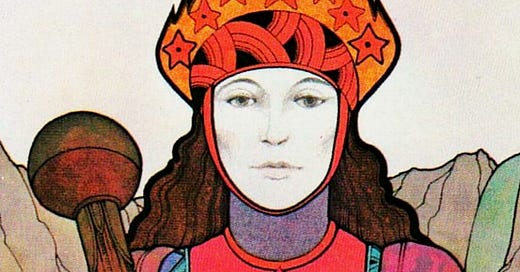Recently in a tarot reading, the Empress was drawn for a client as we explored how this individual could tame their harshness with others, be more accepting, and less reactive.
On a first pass, the Empress seems like a fitting antidote. Where is the softness within? How can she cultivate an environment where others feel heard, led by the masterful nature of relating that this archetype encompasses? Where is there an opportunity to slow down, be more present, and manage the intensity of her own feeling state, so she can hold and meet the emotions of others?
This certainly was useful for us to explore. Both the client and I felt the Empress spoke to many potentials that would allow for more balance and to favor a diplomatic approach. But as the session continued, and other cards brought nuance and dimension, I returned to the Empress to explore her darker sides.
The archetypes of the tarot have many valences, they have shadow and destructive attributes, they have light and generative ones as well. This is a key lesson in all ways of mythical and archetypal thinking, a central tenet that reminds us to see the many dimensions of psychological possibility. No one figure is purely “good” nor “bad”, no one figure can we view in the light of saint-hood without a dark bone in their body.
It brings to mind a quote by Jung:
“How can I be substantial if I do not cast a shadow? I must have a dark side also If I am to be whole.”
The conversation then evolved into how my client can honor the Dark Mother in the Empress (and herself), who knows with the wisdom of her nature when to cut off life from a situation, when to bring the death of winter. In the Greek myth of Persephone’s abduction, her mother Demeter, goddess of the grain and the fecundity of earth, shows how, when she chooses, life withers away and a hollowness falls over the land that matches the depths of her grief and sorrow. She withdraws the very stream of life that sustained all.
We see the Dark Mother in the actions of Baba Yaga as she draws Vasilisa deeper into the Heroine’s Journey, threatening to kill her if she fails her tasks, controlling the forces of nature (the dawn, the blazing sun and the night), and finally providing her with the fiery skull of death and aggression.
This is the nature of the archetype of the mother. She nourishes, she devours, she relates, she destroys. She is the creative matrix from which all life springs and eventually returns. Each of these expressions characterizes the bivalent aspects of the archetype, the positive and negative pole. You cannot have one without the other. She is both Goddess of Death and Earthly Creator.
It is easy to exalt any tarot card, but there are a few that especially get lifted into the one-sidedness of light and goodness (looking at you 10 of Cups). What might it mean for us as readers of these symbols to hold many tensions of possibility, to see the dark nature of the Empress as just as valuable as her nurturing side? How does that widen the funnel of potential as you interact with the card and provide new ways for you to relate to your inner dynamics?
For my client, there was a visible relaxing. Now there was a path where the opposing sides of herself could find common ground. She need not force herself to be “all good” or “perfectly receptive”. She could honor the moments where her instincts said to withdraw or teach a difficult lesson. In turn, she found renewed confidence and energy to challenge herself to be embodied and more feeling when the situation called for it. As contradictory as it may seem, when you stop punishing yourself for one aspect of your behavior, another aspect opens, a counter balance, allowing for a fullness of expression and a conscious choice to engage the new tools at your disposal.





It never occurred to me to consider the shadow side of the Empress. I agree that it’s an important examination, as failing to see her in totality would be a form of spiritual bypassing. Wow. Thanks for triggering some new thoughts within me!